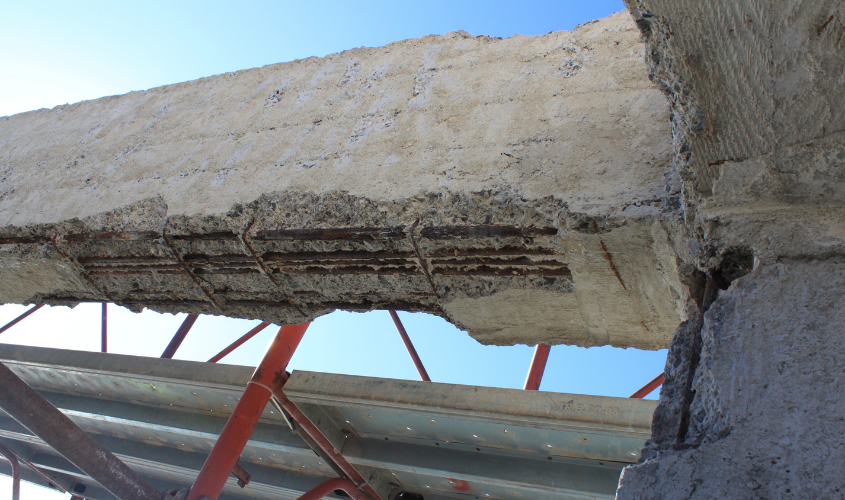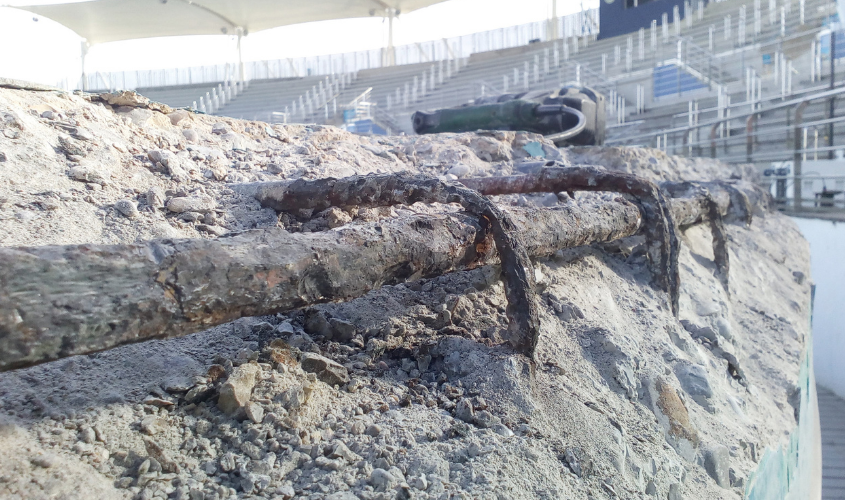
The deterioration of concrete is a phenomenon that requires cortical restoration interventions and protection of the structures. Find out more
The deterioration of the structures is a phenomenon that must always be taken into consideration, for any type of material used and each construction technique. It is necessary to provide for a periodic check of the structures, in order to define the state of conservation and detect the progress of the degradation so as to evaluate any corrective action to be taken.
Deterioration of concrete is a progressive and inevitable phenomenon that requires cortical restoration interventions to rebuild the damaged parts, eliminate cracks and protect the structures from the penetration of substances corroding the reinforcing rods.
Causes of concrete deterioration
The main causes of concrete deterioration are represented by carbonation and by the aggression of chlorides. The poor quality of the materials used in the construction phase and the mistakes made in the installation phase can also affect the progressive degradation of concrete. Among the other mechanical causes, in the case of infrastructures, we can also mention the loads and stresses caused by traffic and the continuous transit of vehicles to which bridges, viaducts, stations, tunnels and metropolitan tunnels are constantly subjected.
The penetration of water, air and humidity inside the structures therefore leads to the degradation of the rods. They oxidate, increase their volume, cracking the concrete and leading to the expulsion of the concrete layer. The reinforcements not protected by concrete are exposed to atmospheric agents which, day after day, compromise the mechanical characteristics of the structure.
For this reason it is necessary to use techniques and solutions for the consolidation of structures, to improve the load-bearing capacity of the structure, but also to restore the properties that they originally had. A structure initially designed with materials having certain mechanical characteristics, as a result of the action of time and degradation, undergoes an impoverishment, in this case it’ll be necessary to improve performance and to increase the durability of the structures.
[LEARN MORE: Repairing and protection of concrete]
How to repair reinforced concrete structures?
To restore the characteristics and functionality of deteriorated reinforced concrete structures and guarantee their conservation over time, it is essential to use good quality products and to know how to choose the most suitable concrete restoration cycle, taking into account the degradation level.
In addition to the extent of the problem, other aspects come into play, in the design phase and on site. The time factor, for instance, is one of these: how much time does it take to do the job? How much time will pass between one process and the other?
Another consideration to be made is related to the environment: is the structure exposed to aggressive phenomena? This is the case of buildings facing the sea, docks, bridges and viaducts exposed to atmospheric agents or corrosion caused by the melting of de-icing salts.
The restoration of deteriorated concrete is one of the most frequent interventions in the existing building heritage. However, the problems and needs related to this are not always the same and even small distinctions between one intervention cycle and another can make the difference.
There are different solutions with specific functions, in order to satisfy the main requirements necessary for the correct execution of the restoration cycle, such as protecting the reinforcing rods, restoring the structural continuity of the concrete, smoothing the surfaces and protecting them to increase their durability.
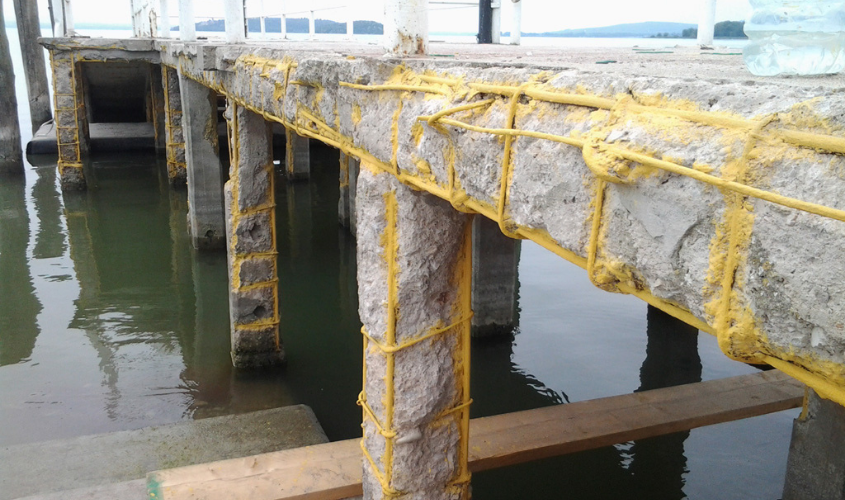
How to increase the durability of the interventions performed?
The use of qualified and certified intervention techniques provides a proper safety standard both in terms of mechanical properties of each system but also its durability characteristics. Most technologies, from concrete restoration cycles to composite systems, complies to environmental durability assessment protocols through tests that simulate the aggressive agents which degrade the materials. The choice of highly resistant materials to aggression is the first step to guarantee the durability of the interventions. Furthermore, it is also very important to maintain constant control and monitor the works over time.
Kimia Solutions
The restoration interventions of degraded concrete on residential and infrastructural buildings are aimed at preserving the functionality, safety and aesthetic appearance of the structures.
Our solutions for concrete restoration of structural elements include cycles in which different products are used together, each with its own function, and simplified cycles using solutions with multiple functions and reducing installation times. The latter includes Betonfix MONOLITE N and MONOLITE R mortars.
Kimia repair mortars are available in thixotropic or pourable variants having different setting times and other characteristics suitable to best meet the needs of users and the different construction site conditions. Workability represents one of the strong points of Betonfix mortars, which are easy to work and apply in any situation.
The materials used for structural concrete repair must necessarily have a CE marking which certifies their performance by standardized tests. The European standard that regulates the performance characteristics of materials aimed at repairing and protecting concrete is EN 1504, it is divided into ten sections that describe the specifications of the products to be used for corrosion protection, cortical restoration, surface protection, bonding, injection and anchoring. In particular, repair mortars are identified by four acronyms that describe their increasing mechanical performance (from R1 to R4). Products suitable for structural restoration will be in classes R3 or R4.
[LEARN MORE: Concrete repair mortars: how to choose]
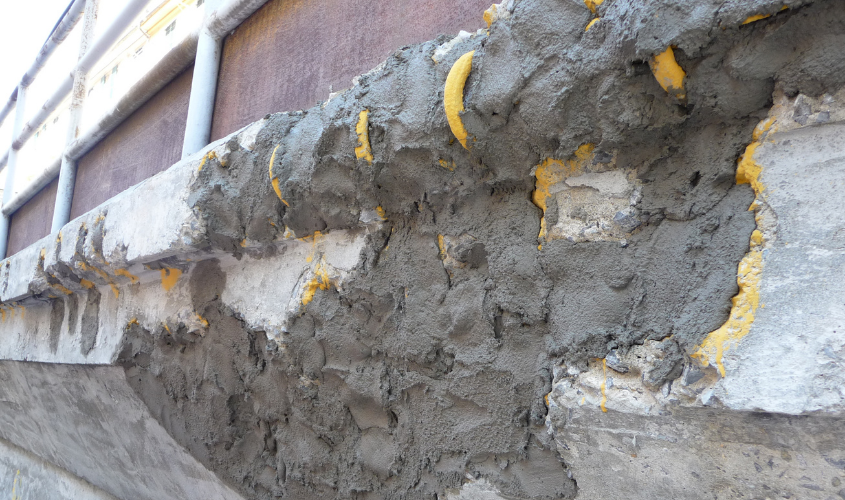
As a consequence of a seismic event, a change of use or excessive loads applied to the floors, it is common to detect damages or structural deficiency, so as to require reinforcement.
In this case, it is also possible to work on the extrados with minimum thicknesses, using a pourable mortar with very high compressive mechanical performance and very high ductility. To achieve these characteristics, special metal fibers are added to the mortar formulation which modify its behavior and make it ideal for the purpose.
Betonfix HCR EVO is a two-component pourable grout with the addition of metal fibers, it reaches very high mechanical strengths in short and long curing. It is used in the consolidation of slabs, restoration and reinforcement of concrete structural elements.
For the restoration and consolidation in small thicknesses of floors with Betonfix HCR EVO it is necessary to evaluate before the execution of the casting, if it is necessary to insert pegs to ensure a collaborative connection of the system with the existing slab and metal connectors for the connection with the perimeter structures.
Casting with Betonfix HCR EVO and before levelling use a spiked roller over the fresh product , so as to eliminate any air bubbles. Roll ANTIEVAPORANTE W, on fresh BETONFIX HCR EVO, in order to allow the casting to cure perfectly.
The product is also available in the thixotropic version Betonfix HCR EVO/TX, with the same mechanical performance, but with a greater consistency, so that it can also be used on sloping surfaces, such as the pitches of roofs.
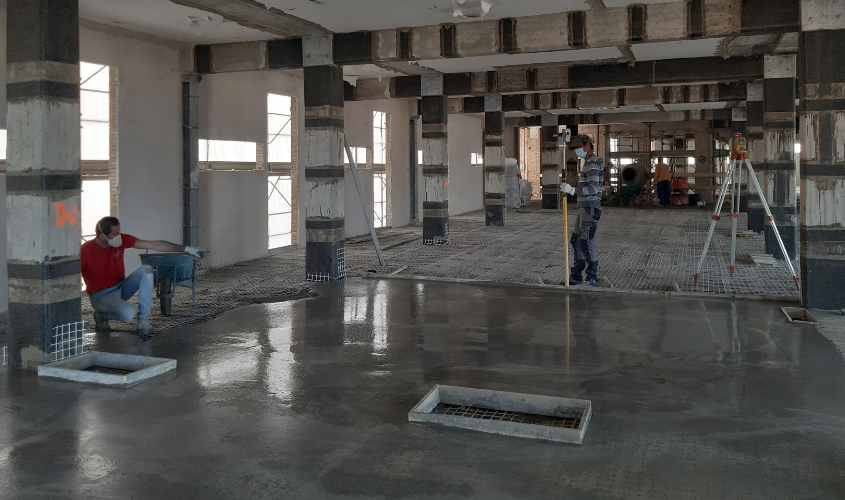
Technical Assistance and Design Support
Do you wish to discover more about concrete restoration? Write your questions in chat for support. You can also fill in Kimia Technical Support Service form to get design consultancy. Our experts will help you choosing the best solutions.
Subscribe our newsletter
Don't miss the next articles, sign up now our newsletter.

